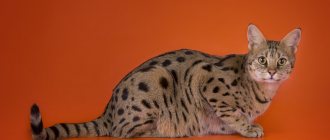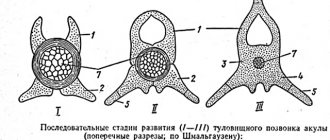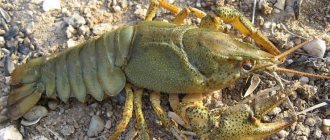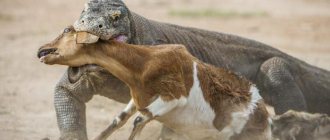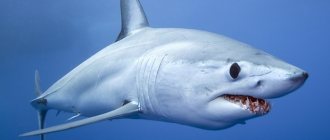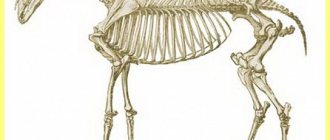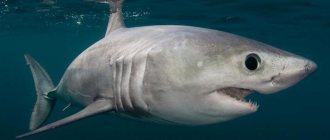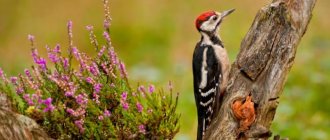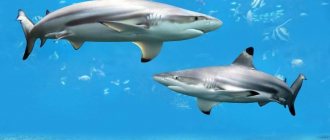Frog larvae, also known as tadpoles, breathe through gills as they are aquatic. When tadpoles mature into adult frogs, they begin to breathe through their lungs. The lungs of frogs are not very well developed, so frogs also breathe through their skin.
The frog's croaking sound can be annoying, but to counter its aesthetically ugly voice, it has one of the most fascinating abilities in the animal kingdom—frogs breathe through both their lungs and their skin. Not only that, but frogs actually change the way they breathe as they grow from a small frog to a mature adult frog!
External structure
The external structure of a frog and its habitat are two inextricably linked links in a single chain. It’s no secret that the appearance and structure are determined by the place and way of life of the animal.
The lake frog lives on the banks and in reservoirs, which is why it got its name. However, a river, swamp, pond and other places can also serve as a place of residence.
The external structure of the frog is very simple. The wide flat head turns into a small body with a reduced tail. The frog has very short forelimbs equipped with four fingers. The hind limbs, on the contrary, are elongated and have five fingers.
Tadpole with legs
Since we are considering the development of a frog in stages, the next step is to identify tadpoles with legs. Their hind limbs appear much earlier than their front ones, after about 8 weeks of development - they are still very tiny. During this same period, you may notice that babies’ heads become more distinct. They can now eat larger prey, such as dead insects.
The forelimbs are just beginning to form, and here we can highlight such a feature - the elbow appears first. Only after 9-10 weeks will a full-fledged frog be formed, although much smaller than its mature relatives, and even with a long tail. After 12 weeks it completely disappears. Now small frogs can go onto land. And after 3 years, a mature individual will form and will be able to continue its lineage.
Covers of an animal
Speaking about the external structure of a frog, it is necessary to pay attention to its skin. The body of an amphibian creature is covered with smooth skin, on the surface of which there is an impressive number of glands that constantly secrete mucus. The secretion lubricates the surface, helping to retain moisture and promoting gas exchange. Mucus also protects the animal from penetration of harmful microorganisms into the body.
The amphibian's thin skin protects the body and also participates in gas exchange. Features of the external structure of the frog are associated with its lifestyle. For example, water enters the animal’s body only through the skin. It is for this reason that the frog must spend most of its time in dampness or water.
Reproduction methods
Both species of amphibians require bodies of water to procreate. In water they lay eggs. This occurs in the form of long cords that lie on the bottom or on the stems of aquatic vegetation. Tadpoles that are born form groups and try to stay close to the bottom of the reservoir. In a year, the toad lays 10 thousand eggs.
Males of some varieties of these amphibians participate in the process of oviposition. They can sit in holes in the ground with their eggs wrapped around their legs, waiting for the tadpoles to appear. Subsequently, the males move the eggs into the pond.
Expert opinion
Karnaukh Ekaterina Vladimirovna
Graduated from the National University of Shipbuilding, majoring in Enterprise Economics
Frog eggs look like slimy clumps. They are small in size and located on the surface of the reservoir. Tadpoles also live in water. Only adult individuals are able to go onto land. During the breeding season, frogs usually lay many eggs. However, the specific amount depends on the variety. For example, the bovine variety is capable of laying up to 20 thousand eggs during the season.
Characteristics of the external structure of the frog: body parts
Speaking about the external structure of the frog, we can distinguish the following parts of the body - the hind and forelimbs, the head and the torso. One of the features of the amphibian is the almost complete absence of a neck. In general, the separation line between the body and the head is not clear, or rather, it is practically non-existent. The frog's body is slightly larger than its head. The animal completely lacks a tail.
The large head has large bulging eyes. They are covered by clear eyelids designed to prevent damage, drying out and clogging.
Below the eyes are the nostrils. In general, it is worth noting that the eyes and nostrils are located close to each other at the top of the head for a reason. The fact is that while swimming they are constantly above the surface of the water. Thanks to this, the animal can breathe and see everything that happens above the lake.
The upper jaw of frogs is armed with a row of small teeth. But they don't have ears. Their role is played by the eardrums located behind the animal’s eyes.
Tadpole
The next stage of frog development after the embryo is the larva, which leaves the protective shell within 2 weeks after fertilization. After the so-called release, the frog larvae are called tadpoles, which are more like small fish about 5-7 mm long. The larva's body includes a distinct head, trunk, and tail. The role of the respiratory organs is played by two pairs of small external gills. A fully formed tadpole has organs adapted for swimming and breathing; the lungs of the future frog develop from the pharynx.
Animal color
Describing the external structure of the frog, let us pay attention to its color, which is largely determined by its habitat. Most amphibian representatives mimic external nature. And some varieties even have special cells that can change the color of the skin depending on environmental conditions. Therefore, the color of the animal often repeats the pattern of the places where the creature lives.
In the tropics there are amphibians with bright colors. This indicates that the animal is very poisonous. This is what scares away enemies from such frogs.
Amphibian limbs
When presenting the external structure of the lake frog, we mentioned the unusual limbs of the animal. The peculiarity of their structure is due to the fact that the front legs are used for landing and for support in a sitting position. The hind limbs are much stronger and longer than the forelimbs. It is the hind legs that are used to move through water or on land. There are membranes on the limbs of the animal, which greatly facilitate movement in the water. The external structure of the frog is such that it allows the animal to move not only in water, but also on land.
Some representatives can even climb trees or glide in the air. Frogs have a lot of adaptations depending on their habitat. Nature has endowed some with special suction cups, thanks to which they stick to any surface, while others can remain under layers of sand or soil for a long time. In all these cases, their strong limbs help amphibians move.
Difference in movement
It is also possible to distinguish one individual from another by its method of movement. So, frogs move by jumping. Due to the short length of their limbs, toads are not capable of jumping. That's why they waddle awkwardly on the ground.
Frog skeleton
The skeleton of a frog, according to biologists, is very similar to the skeleton of a perch. However, due to the nature of the lifestyle, there are significant differences. As we know, frogs have limbs. The front ones are attached to the spine with the help of peculiar bones. But the rear ones are connected to the spine with the help of the hip bones. The structure of the skull of an amphibian is much simpler than that of fish, since it has fewer bones.
The frog's spine consists of a total of nine vertebrae. Moreover, it is divided into four sections: cervical, sacral, caudal and trunk. But the animal has no ribs.
Digestive system
Frogs and toads feed on insects and small invertebrates. Such animals are classified as predators. Sometimes they even disdain their relatives. Frogs guard their prey in a secluded place, motionless. As soon as the prey approaches, they shoot out their tongue and consume the prey.
The digestive system of frogs has its own characteristics. The fact is that in the oropharyngeal cavity of the animal there is a long tongue. It is with this that the frog catches its prey. After the prey has stuck to the surface of the tongue, it enters the oral cavity. The animal does not use its teeth to chew food; it only needs them to hold the victim. Next, the food immediately enters the esophagus and stomach. And then the mass moves into the duodenum, which passes into the small intestine. The remains of undigested food enter the large intestine.
Benefit
Amphibians feed on harmful insects and plant parasites. Thus, they bring great benefits to gardens, vegetable gardens, forests, fields and meadows. To maintain optimal numbers of amphibians in your area, it is recommended to reduce the use of chemicals. Also for this purpose it is worth making a small artificial pond, filling it with aquatic plants.
Circulatory system
The internal structure of the green frog is more complex than that of fish. The fact is that the animal has a three-chambered heart. It is located in the front of the body. Consists of two atria and a ventricle. There is a gradual alternating contraction of both atria and the ventricle.
The right atrium contains only venous blood, and the left atrium contains arterial blood. But it is in the ventricle that their mixing occurs.
The peculiar arrangement of the vessels led to the fact that the head of the animal is supplied with arterial blood, but the rest of the body receives mixed blood. Frogs have two circles of blood circulation.
Amphibian Blood
Blood is a connective tissue that plays a very important role in any organism. It is she who transports metabolic products and nutrients. As you know, blood consists of red blood cells and white blood cells.
The external structure and shape of frog red blood cells differs from human red blood cells. In the animal they are oval and have nuclei. But in humans, red blood cells are biconcave and lack nuclei. This increases the area occupied by oxygen molecules. This means that the human circulatory system is more perfect. In addition, frog red blood cells are larger and there are much fewer of them than in human blood. All this suggests that amphibians require oxygen in much smaller quantities than mammals. And the reason for this is the ability to absorb part of the necessary oxygen by the surface of the skin.
Respiratory system
The respiratory system of frogs also has its own characteristics. Amphibians breathe not only with the help of their lungs. The skin also plays an active role in this process. As you can see, external integuments play a vital role in the life of amphibians. The lungs of an animal are thin-walled paired sacs that have a cellular internal structure and a highly branched network of blood vessels.
How does breathing occur? Amphibians use valves that close and open their nostrils. During inhalation, the nostrils open and the oropharyngeal cavity descends. This is how air gets inside. In order for it to get further into the lungs, the nostrils close, and the bottom of the oropharynx, on the contrary, rises. Exhalation is carried out due to the work of the walls of the lungs and the movement of the abdominal muscles.
Hello student
General remarks
Experiments have found that a frog weighing 31 g at a temperature of + 20° absorbs 105 cm3 of oxygen per hour per kilogram of live weight in winter, and in spring (April) 211 cm3 of oxygen.
On average, one green frog consumes 0.2259 g of oxygen per day and releases 0.0677 g of carbon dioxide. At night, the release of carbon dioxide increases. Taking the weight of oxygen consumed at +2° or +3° and carbon dioxide released at the same temperature as 100%, we obtain the following changes in connection with temperature (on 6 frogs in 6 hours):
| Temperature | Oxygen | Carbon dioxide |
| 2— 3 | 100% | 100% |
| 6— 7 | 400% | 318% |
| 12—14 | 345% | 300% |
| 18—20 | 329% | 283% |
| 28—30 | 193% | 197% |
The respiratory quotient (the amount of carbon dioxide produced divided by the amount of oxygen consumed) of a frog varies depending on the partial pressure of oxygen in the environment as follows:
O2 content in the air in %.. 1.24 3.26 5.64 14.2 18.2
Respiratory coefficient ……… 2.4 1.02 0.90 0.83 0.73
The affinity of frog hemoglobin for oxygen is lower than that of humans. It follows that at the same temperature, human blood takes up more oxygen than the blood of a frog. However, at the low temperature characteristic of the frog's body, its hemoglobin is able to bind the same amount of oxygen as a person binds at normal body temperature. Compared to mammals, the bullfrog's blood binds relatively large amounts of carbon dioxide, but cannot regulate its alkalinity. The oxygen capacity of the green frog's blood is 13.5-23 percent by volume. The grass frog consumes more oxygen than the green frog.
Oxygen at a pressure of 3.5 atmospheres kills a frog within 65 hours. Frogs can exist for many hours in a nitrogen atmosphere. If all the blood of a frog is replaced with a 0.8% solution of table salt, then it takes several hours for the cells of the central nervous system to completely lose their irritability.
As already indicated, in frogs skin respiration is of exceptional importance. Unlike mammals, amphibians have a larger skin surface area than their lungs. (in amphibians the ratio of these surfaces is 3:2, in mammals it is 1:50-100, in humans it is 1:55-70). Through the skin, the frog gives off more carbon dioxide (respiratory coefficient 1.9-2.5) than it receives oxygen, and through the lungs - vice versa (respiratory coefficient 0.3-0.4). The oral mucosa is of some importance in gas exchange. As the temperature rises, skin respiration becomes insufficient. Experiments have shown that under water (without air) frogs survive the following periods:
Body temperature……….2° 6° 11.8° 13.8° 15.5° 18.5° 21.1° 26.5° 29°
Survival in hours... 192.3 29.2 8.0 4.5 3.0 2.3 1.7 0.8 0.2
From this it is clear that at high temperatures pulmonary respiration comes first. Only the pulmonary respiration apparatus will be considered below.
Respiratory tract
From the oral cavity, described briefly in Chapter I and in more detail in Chapter IX, the azygos respiratory tract (pars larungo-trachealis) begins. It is a hollow organ, covered from the inside by a continuation of the mucous membrane of the oral cavity, strengthened (especially in its anterior part) by the skeleton of the larynx and equipped with muscles. The usual division into the larynx (larynx) and windpipe (trachea) in the frog is practically not applicable. On the laryngeal eminence (prominentia laryngea) there is a longitudinal respiratory fissure (aditus laryngis), closed in the interval between inhalation and exhalation. Having passed through the respiratory slit, the air enters the vestibule of the larynx (vestibulum laryngis), separated by the vocal cords (labia vocalia) from the laryngeal-tracheal cavity (cavum laryngo-tracheale). The latter is a homologue of the trachea of other forms. The further path goes through the right and left pulmonary openings (aditus pulmonis) into the lungs.
Rice. 1. Cartilaginous skeleton of the larynx of a green frog from above (a) and from the side (6).
On the first, the terminal cartilages are removed:
1 - apical notch, 2 - mid-posterior process, 3 - tracheal process, 4 - body of the hyoid apparatus, 5 - posterolateral process, 6 - anterior articular process of the cricoid-tracheal cartilage, 7 - cricoid part, 8 - muscular process, 9 — posterior articular process, 10 — hyoid-cricoid ligament, 11 — pulmonary process, 12 — esophageal spine, 13 — posterior terminal convexity, 14 — terminal cartilage, 15 — anterior terminal convexity, 16 — arytenoid cartilage, 17 — anterior vocal pad , 18 - posterior vocal cushion, 19 - trailing process.
The skeleton of the frog's respiratory tract consists of three large and four small cartilaginous formations: an unpaired cricoid trachealis (cartilago cricotrachealis), two arytenoids (cartilagines arytaenoideae), two terminal (cartilagines apicales) and two main (cartilagines basales) cartilages. The cricoid cartilage consists of a cartilaginous ring called the cricoid part (pars cricoidea = annulus) and a posterior tracheal part (pars trachealis). The cricoid part occupies an inclined position relative to the horizon in a normally sitting animal. At the posterior end of the cricoid part there is an unpaired spine of the esophagus (spina oesophagea), adjacent to the abdominal part of the latter. On each side of the cricoid part there is an anterior articular (processus articularis anterior), muscular (pr. muscularis) and posterior articular (pr. art. posterior) process. On the outer surface of the latter, the hyoid-cricoid (ligamentum hyo-cricoideum) and intercricoid (Iig. intercricoideum) ligaments are attached. The tracheal part consists of two (right and left) thin curved strips of cartilage, connected in the back of the green frog by a transverse crossbar (absent in the grass frog). The thin lateral part is called the tracheal process (processus trachealis = pr. bronchialis). At its connection with the transverse crossbar, the pulmonary process (pr. pulmonalis) extends back, and from the middle of the crossbar the unpaired trailing one (pr. obturatorius) goes forward. The cricoid cartilage serves as a frame to which the arytenoid cartilages are attached. The latter are thin curved triangular plates that limit the respiratory gap on the right and left. In their lower part there is a thick vocal pad (pulvinaria vocalia), movably connected by connective tissue. At the apex of each arytenoid cartilage there is a small apical notch (incisura apicalis), in front of which lies the anterior (prominentia apicalis anterior), and behind it lies the posterior (prom. apicalis posterior) apical convexities. The notch itself is occupied by the movable apical cartilage. The main cartilage is placed in the middle of the arytenoid cartilage, being hidden in the transverse mucous fold.
Rice. 2. Musculature of the green frog's larynx from above. On the left, the superficial part of the laryngeal dilator has been removed so that its deep parts are visible:
1 - hyoid-larynx muscle, 2 - cricoid-arytenoid part of the laryngeal dilator, 3 - hyoid-cricoid part of the laryngeal dilator, 4 - hyoglossus muscle, 5 - posterior constrictor, 6 - hyoid-cricoid ligament, 7 - pleural border, 8 - body of the hyoid apparatus, 9-11 - first, agora and third posterior masticatory muscles, 12 - superficial part of the laryngeal dilator, 13 - anterior compressor, 14 - intercricoid ligament, 13 - dorsal branch of the pulmonary artery, 16 - esophageal spine.
The muscles of the larynx close and open the airway. There are 4 muscles on each side, of which one, the laryngeal dilator (musculus dilatator laryngis), opens the lumen, and the other three are the sublingual laryngeal (m. hyo-laryngeus), anterior (m. sphincter anterior) and posterior (m. sph. posterior) compressors - act in the opposite direction. The laryngeal dilator consists of a superficial part and a deeper part, which in turn is divided into two.
The superficial part extends from the cartilaginous end of the mid-posterior process of the hyoid apparatus and is attached to the upper part of the arytenoid cartilage, with some of its fibers reaching the apical cartilage.
The deep part of the laryngeal dilator is divided by the muscular process of the cricoid cartilage into two parts - the cricoid-arytenoid (pars crico-arytaenoidea) and the sublingual cricoid (pars hyo-cricoidea). The hypoglossal laryngeal muscle starts from the dorsal surface of the bony part of the mid-posterior process of the hyoid apparatus and connects in front of the respiratory fissure with its partner on the other side. The constrictor anterior muscle lies under other muscles on the side of the arytenoid cartilage. The posterior constrictor is divided into two parts, having a common attachment at both ends. The posterior attachment point is the outer part of the posterior ends of the arytenoid cartilages, and the anterior attachment is that on the anterior ends of the same cartilages. The middle part of the muscle remains undivided, and the lateral (weaker) part has a tendon in its middle part. All the described muscles of the larynx are supplied by branches of the long laryngeal nerve, and the dilator of the larynx receives another branch from the short laryngeal nerve.
As already mentioned, the vocal cords are located between the vestibule of the larynx and the laryngeal-tracheal cavity.
Rice. 3. Deep layer of green frog laryngeal musculature from above:
1 - hyoid-laryngeal muscle (cut), 2 - hyoid-cricoid part of the laryngeal dilator, 3 - posterior compressor, 4 - hyoid-cricoid ligament, 5 - anterior compressor, 6 - intermediate tendon of the posterior compressor of the larynx, 7 - cricoid-arytenoid part laryngeal dilator, 8 - posterior compressor, 9 - intercricoid ligament.
The gap between these two cavities is called the glottis (rima glotti dis). The vocal cord on each side is divided by a longitudinal groove (sulcus longitudinalis) into an upper (pars superior) and lower (pars inferior) part. The pulmonary opening is almost completely surrounded by a fold of the mucous membrane - the bronchial fold (plica bronchialis).
Rice. 4. Longitudinal section through the respiratory tract of a green frog associated with the left lung:
1 - vestibule of the larynx, 2 - intercricoid ligament, 3 - posterior vocal cushion, 4 - cricoid-tracheal cartilage, 5 - pleural border, 6 - left lung, 7 - body of the hyoid apparatus, 8 - lingual-hyoid muscle, 9 - sublingual - laryngeal muscle, 10 - anterior vocal cushion, 11 - lower part of the vocal ligament, 12 - cricoid-tracheal cartilage, 13 - laryngeal-tracheal cavity, 14 - bronchial fold, 15 - pulmonary opening, 16 - cricoid-tracheal cartilage, 17 - pulmonary vein.
The respiratory tract is covered with ciliated epithelium with mucous glands. There is no ciliated epithelium on the vocal cords.
Lungs
The lungs (pulmones) are two wide, symmetrical, freely spaced thin-walled sacs. At the base they are somewhat narrowed (“root” of the lung); the posterior end of the lung becomes slightly sharper. If the lung is inflated, it becomes almost round. The length of the inflated lung ranges from 29 to 47% of the body length in different species of frogs. There is a significant cavity inside the lung, and on the walls there are a number of chambers separated from each other by partitions (sertae). From the outside, these partitions give the lung the appearance of foam, and from the inside you can see that the cells (“alveoli”) of the first order break up into cells of the second and sometimes third order. There are from 30 to 40 cells of the first order. Cells of the second order are generally 4-6 times larger.
The peritoneum, lining the body cavity, wraps around each lung, covering it with a thin, smooth membrane - the pleura.
Due to the filling of numerous capillaries with blood, the lungs in a fresh state appear light pink.
Lymphatic vessels usually follow the course of the blood vessels. Numerous thin nerve fibers of the lungs originate from the vagus nerve. Histologically, lung tissue consists of smooth muscle fibers and fibrous connective tissue. In some places there are thin elastic fibers and, somewhat more often, star-shaped black pigment cells. The inner surface of the lung is covered with a single-layer epithelium, which, in those places where it covers the first-order septa, bears ciliated cilia.
Breathing mechanism
We should not forget that in a frog the lungs play the role of a hydrostatic apparatus: a frog with its lungs removed cannot swim on the surface, and if the lungs are artificially inflated, then the frog is unable to dive. The respiratory movements of modern anurans arose by transforming the process of larvae drawing water through the mouth to wash the gills, and later for gas exchange through the oral mucosa.
The absence of ribs makes it impossible for the frog to inhale air using the suction pump method. Its oral cavity functions as a pressure pump, and therefore the frog's mouth must remain closed: a frog with its mouth open must suffocate. Observing a living frog, it is easy to notice two types of oscillatory movements of the throat alternating with each other: constant small oscillations (“oscillating”) and more rare but stronger ones. With vibrations of the first kind, the respiratory gap remains closed and the entire effect is reduced to refreshing the air in the oral cavity with air drawn in through the nostrils. This mechanism ensures breathing through the oral mucosa. Strong oscillatory movements of the skin of the throat are associated with pulmonary breathing. They can be distinguished into three phases: retraction (“aspiration”), exhalation (“expiration”) and inhalation (“inspiration”). In the first phase, air is sucked in by pulling the lower wall into the oral cavity through the nostrils with the respiratory slit closed. Then the latter opens, and air from the lungs, mainly by contraction of the abdominal muscles, is pushed into the oral cavity (second phase). Immediately after this, with the nostrils tightly closed, the bottom of the oral cavity is pulled up and the mixed air from it is pushed (“swallowed”) into the lungs (third phase). From what has been said, it is clear how important the mechanism of closing the nostrils is for the frog. The smooth muscles of the nasal apparatus are insufficient for this purpose. It has been noted that pressing the prelingual tubercle of the mandible on the premaxillary bones moves the latter so that the ascending process of the facial part of each premaxillary bone helps to close the nostril closest to it. In addition, when the floor of the oral cavity is strongly pulled up, the anterior processes of the hyoid apparatus clamp the choanae.
Rice. 5. The interior of a severely inflated left lung.
Under natural conditions, young frogs breathe somewhat more frequently than adults. Processing the data of Bannikov (1940) gives for young grass frogs from near Moscow the following dependence of the number of respiratory movements per minute (P) on air temperature (t°): p = 43.62 + 7.52 A similar relationship for adult frogs can be expressed formula: p = 19.9 + 7.55t°. In addition to temperature, the respiratory rhythm is also influenced by all sorts of sudden changes: a sharp change in lighting, the appearance of moving objects in the field of view, mechanical irritations, etc. The frog reacts to all such phenomena by increasing the respiratory rhythm, but then it returns to its previous state.
Of the internal factors, the carbon dioxide content in the blood is of particular importance: the passage of fluid rich in carbon dioxide; through the isolated head of the frog gives a noticeable increase in the respiratory rhythm.
Endocrine glands
It is worth mentioning two glands, both topographically and ontogenetically related to the respiratory organs.
The thyroid gland (glandula thyreoidea) is paired and lies in the form of a poorly visible oblong-oval or round body between the posterolateral and mid-posterior processes of the hyoid apparatus. Its relationship to the surrounding cartilage and muscles is variable. Often it only adjoins the edge of the hyoglossus muscle, but sometimes it is completely covered by it on the ventral side.
Rice. 6. Secondary mechanism for closing the green frog's nostrils. A projection of the hyoid apparatus and the cartilaginous part of the presternum is given on the roof of the oral cavity.
Rice. 7. Position of the green frog thyroid gland:
1 - main horn of the hyoid apparatus, 2 - thyroid gland, 3 - vocal sac.
Blood circulation in the gland is supplied by branches of the external carotid artery and external jugular vein. The thyroid gland contains iodine (in Ram piriens 0.063%), which is apparently the main active principle of its hormone. The latter enhances metabolism, increases pulse and excitability. Thyroid hormone plays an essential role in the process of metamorphosis.
The thymus gland (gl. thymus) of the frog is also steamy. It lies in the form of a small oblong-oval body behind the eardrum, under the muscle that pulls the lower jaw down. In a green frog 8 cm long, the thymus gland measures 3x1.5 mm. This gland is best expressed in young frogs, and with age it experiences increasing degeneration. Its significance has been studied primarily in higher vertebrates, where it regulates the rate of development. In frogs, the thymus gland produces white blood cells. Removal of the thymus gland causes a number of disorders in frogs: weakening of muscles, skin ulcers, swelling, bleeding, etc. Feeding tadpoles with the thyroid gland enhances the development of thymus.
Rice. 8. Position of the thymus gland:
1 - vein of the thymus gland, 2 - thymus gland, 3 - ring of the tympanic membrane, 4 - dorsal muscle of the scapula, 5 - lateral branch of the large cutaneous artery, 6 - deltoid muscle, 7 - depressor mandible, 8 - small masticatory muscle.
Literature used: P.V. Terentyev Frog: Textbook / P.V. Terentyev; edited by M. A. Vorontsova, A. I. Proyaeva. - M. 1950
Download abstract: You do not have access to download files from our server. HOW TO DOWNLOAD HERE
Archive password: privetstudent.com
Sense organs
The sense organs of amphibians have their own characteristics, due to the fact that animals also live on land. The lateral line organs help the frog navigate in space. The largest number of them is located on the head. Outwardly, they resemble two stripes that run along the body.
Temperature and pain receptors are located on the skin of amphibians. The nose as a tactile organ only works if it is located above the water. In water, the nostrils are always closed. Even the respiratory system is fully adapted to the amphibian’s habitat both in water and on land.
Calf throwing
As a rule, a lot of eggs are laid, with a reserve, because from the stage of fertilization to the adult frog, their offspring are exposed to countless dangers (unfavorable conditions for further development, natural selection).
Unfertilized eggs become white or opaque. If everything went well, you can
observe the division of the yolk into two, then into four, into eight, and so on until it looks like a raspberry inside the jelly. Soon the embryo begins to look more and more tadpole-like, moving little by little inside the egg. On average, the egg stage lasts about 6-21 days, until the larva hatches out. Most eggs develop in calm or still waters to prevent mechanical damage to the eggs.
